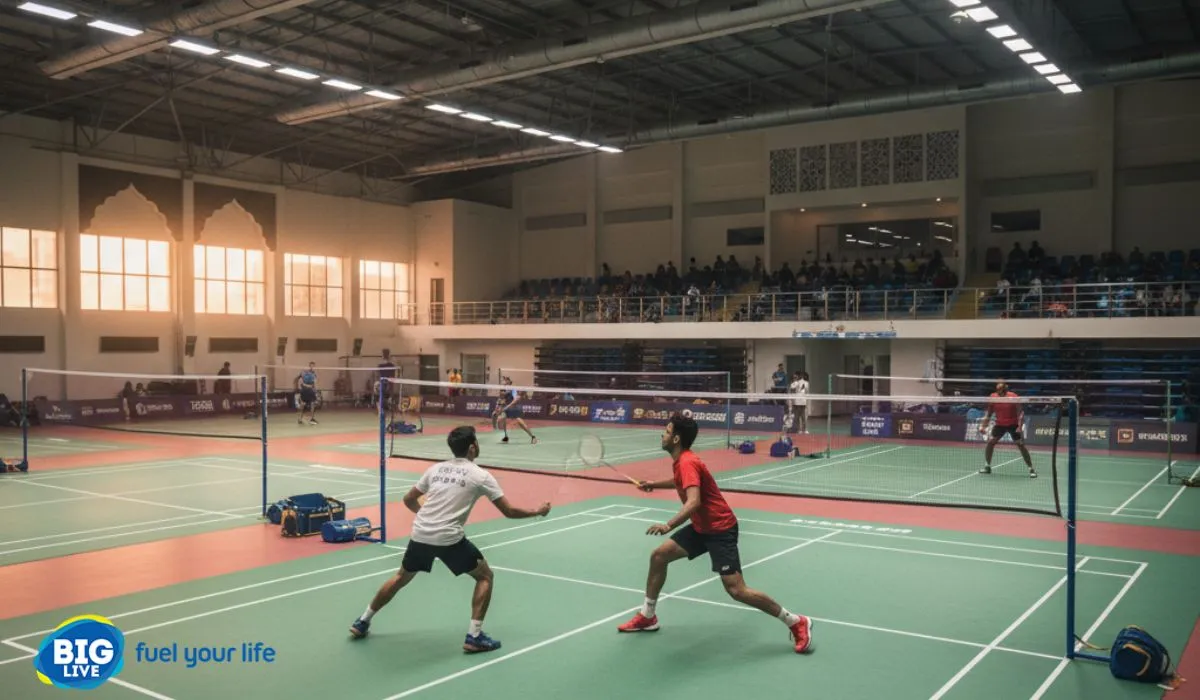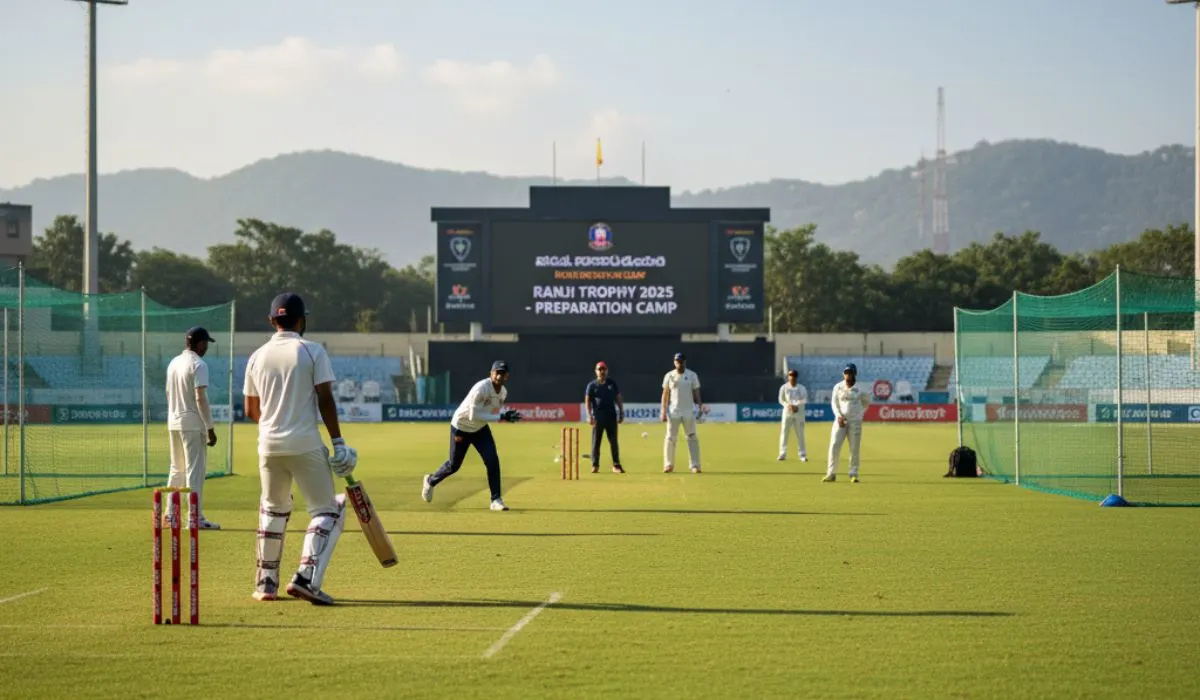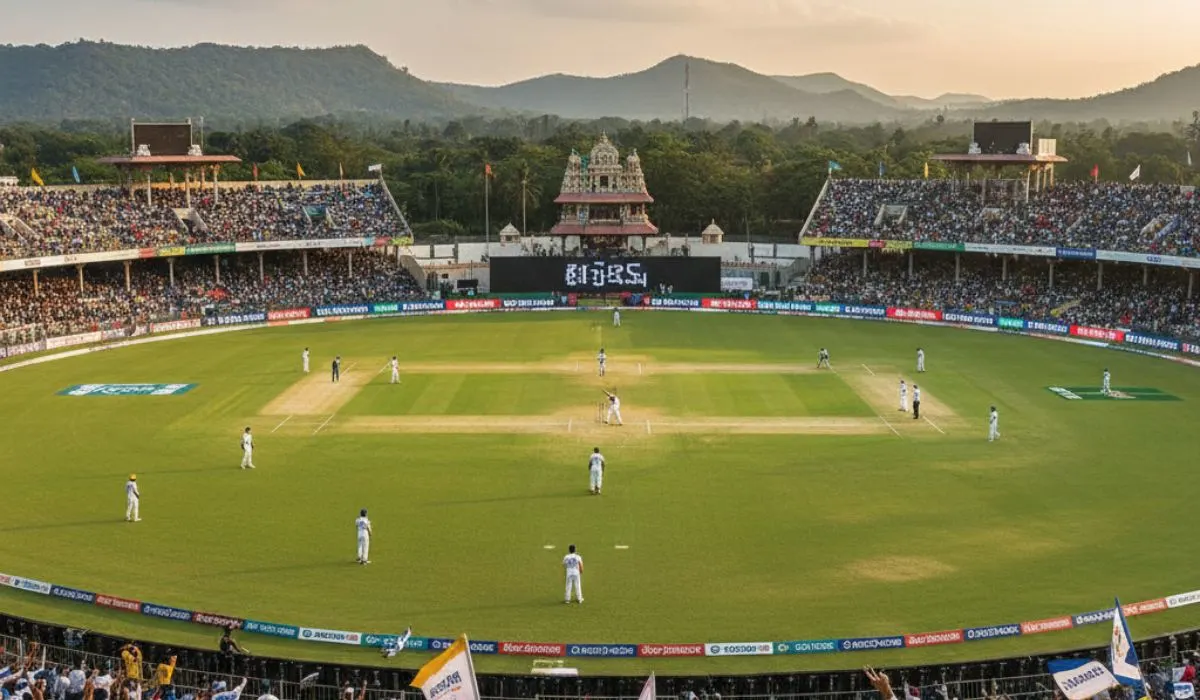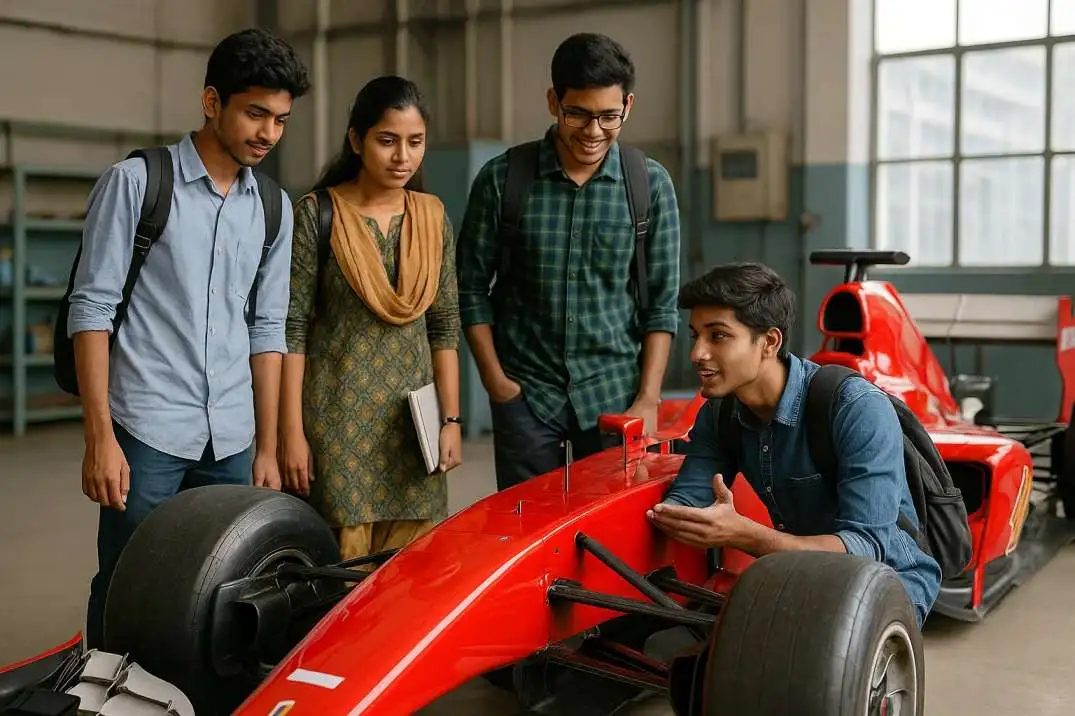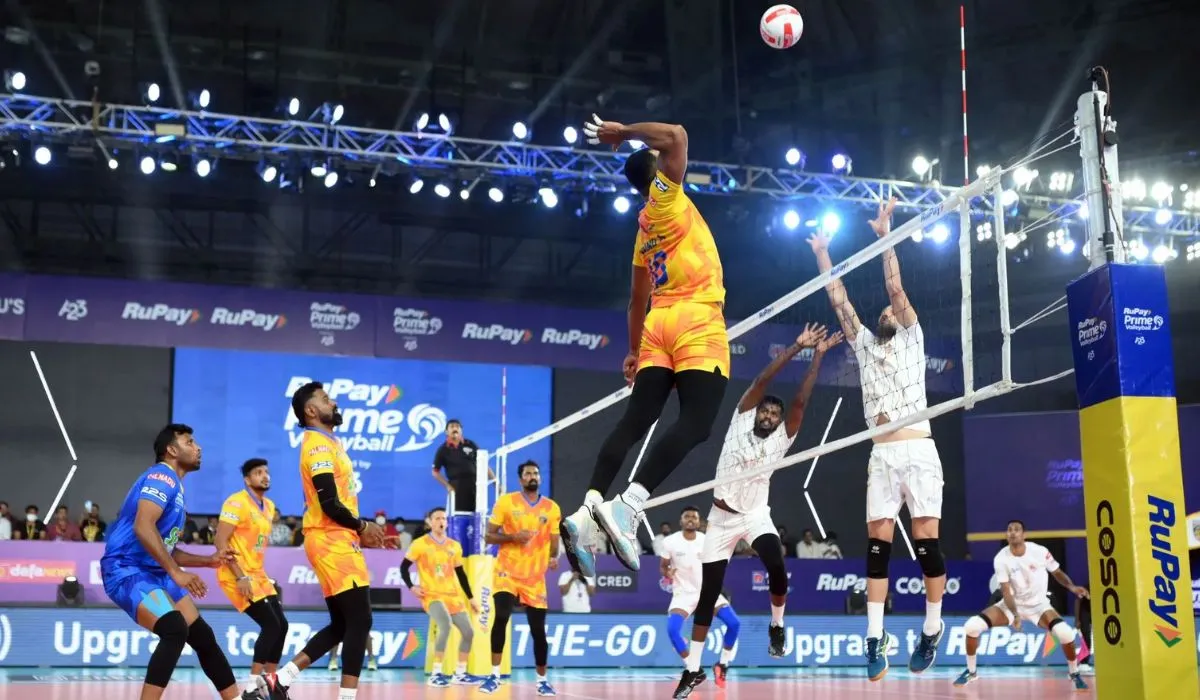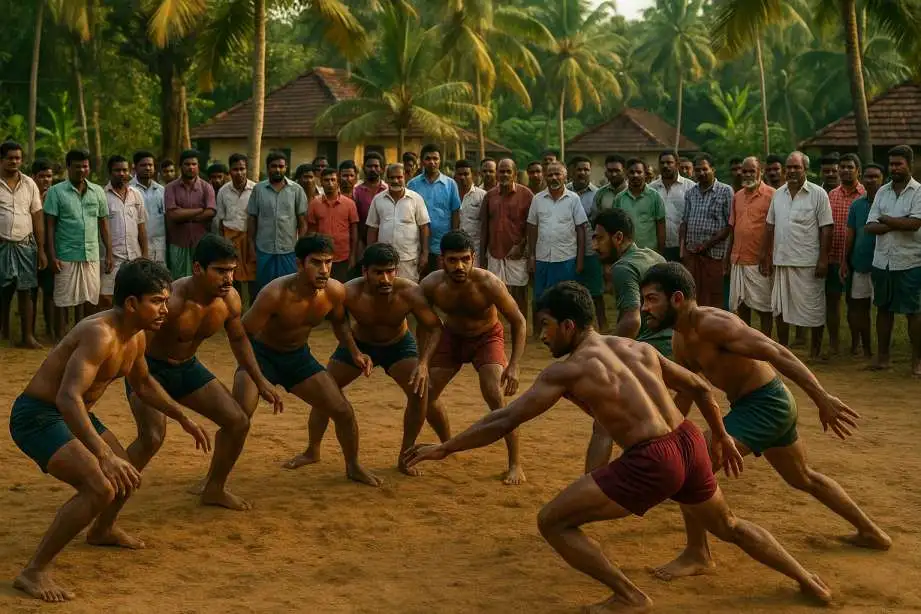When you walk through the villages of Punjab and Haryana, you'll hear cheers echoing from dusty fields. Children run around playing a game that looks like tag but is much more exciting. This game is kabaddi, and it's the soul of these two states. I've spent years watching this amazing sport grow from village grounds to international arenas. The passion people have for kabaddi in Punjab and Haryana is unlike anywhere else in the world. Let me take you on a journey to understand why this ancient game has such deep roots in these lands.
What Makes Kabaddi So Special?
Kabaddi is not just a sport - it's a way of life in Punjab and Haryana. The game is simple yet thrilling. Two teams face each other, and one player tries to tag opponents while holding their breath. They keep saying "kabaddi, kabaddi" to show they're not breathing. If they get caught, they're out. If they escape back to their side, the tagged players are out. The beauty of kabaddi lies in its simplicity. You don't need expensive equipment or fancy grounds. Just some space, strong legs, and a brave heart. This is why it became so popular in rural areas where people had limited resources but unlimited spirit.
Why Kabaddi Is Popular In Punjab And Haryana: Deep Cultural Roots
The Ancient Connection
Kabaddi history goes back thousands of years. Some say it started during the time of the Mahabharata. The great warrior Abhimanyu used kabaddi-like tactics in battle. This connection to ancient warriors makes perfect sense when you see the fierce fighting spirit of Punjab and Haryana.
Both states have always been home to brave soldiers and wrestlers. The physical nature of kabaddi matches perfectly with their culture of strength and courage. Farmers who worked hard in fields all day found kabaddi a natural way to test their fitness and have fun.
Village Life and Community Bonding
In Punjab and Haryana villages, kabaddi brings everyone together. After long days of farming, men would gather in the evening for friendly matches. These games weren't just about winning or losing. They were about building bonds, staying fit, and keeping traditions alive.
I remember visiting a small village near Chandigarh where the entire community came out to watch the local kabaddi match. Grandparents cheered, children learned by watching, and young adults showed off their skills. This scene repeats in hundreds of villages across both states every single day.
The Wrestling Culture Connection
Why Physical Sports Thrive Here
Punjab and Haryana are famous for producing world-class wrestlers and athletes. The same qualities that make a good wrestler - strength, quick thinking, and fearlessness - also make a great kabaddi player. The culture of physical fitness runs deep in these states. From a young age, children are encouraged to be strong and active. Kabaddi becomes a natural choice because it builds the same muscles and mental toughness that wrestling does.
Training Grounds in Every Village
Almost every village in Punjab and Haryana has a kabaddi ground. These might just be cleared patches of earth, but they serve as training centers for future champions. Local coaches, often former players themselves, pass down techniques and strategies to younger generations.
Famous Kabaddi Players In Haryana And Their Impact
Rising Stars Who Inspired Millions
Famous kabaddi players in Haryana have put the state on the world map. Players like Deepak Hooda, Rohit Kumar, and Manjeet Chhillar have become household names. Their success in professional leagues has inspired thousands of young people to take up the sport seriously. These players didn't come from wealthy families or expensive training academies. They learned kabaddi on village grounds, just like millions of other children. Their stories show that with hard work and dedication, anyone can reach the top.
The Pro Kabaddi League Effect
When the Pro Kabaddi League started in 2014, it changed everything for players from Punjab and Haryana. Suddenly, kabaddi became a professional career option. Young players could earn good money while playing the sport they loved. The league also brought kabaddi to television screens across India. Families would gather to watch matches, cheering for players from their own states. This media attention made kabaddi even more popular among children and teenagers.
Understanding The Game: There Are 12 Players In Kabaddi
Team Structure and Strategy
Many people don't know that there are 12 players in kabaddi on each team, though only 7 play at one time. This gives teams flexibility to use different strategies and keep players fresh throughout the match. In Punjab and Haryana, coaches pay special attention to building complete teams. They look for different types of players - some who are great at raiding (attacking), others who excel at defense, and versatile players who can do both.
Local Tournament Systems
Both states have well-organized tournament systems at village, district, and state levels. These competitions help identify talent early and give players regular practice against tough opponents. The competition is so fierce that even village-level matches can be incredibly exciting to watch.
The Role of Agriculture and Rural Life
Why Kabaddi Is Popular In Punjab And Haryana: The Farming Connection
Agriculture shapes life in both Punjab and Haryana. Farmers develop incredible physical strength from working in fields all day. This natural fitness makes them excellent kabaddi players without any special training. The seasonal nature of farming also gives people time to focus on sports during certain parts of the year. After harvest season, villages organize big kabaddi tournaments that can last for weeks.
Community Festivals and Celebrations
Kabaddi matches are central to many local festivals and celebrations. During harvest festivals like Baisakhi, kabaddi tournaments bring together teams from different villages. These events strengthen community bonds and keep the sport alive in popular culture.
Economic Opportunities Through Kabaddi
From Hobby to Profession
The growth of professional kabaddi has created new economic opportunities for young people in Punjab and Haryana. Players can now earn substantial incomes through league contracts, sponsorship deals, and coaching positions. Many former players have also become successful coaches, team managers, or sports commentators. This has created a complete ecosystem where kabaddi provides livelihoods for hundreds of people beyond just the players.
Government Support and Infrastructure
Both state governments have recognized kabaddi's importance and invested in better facilities. New stadiums, training centers, and coaching programs have been established. This official support has helped maintain the sport's popularity and improved the quality of play.
The Physical and Mental Benefits
Building Character Through Sport
Kabaddi teaches important life lessons that resonate with the values of Punjab and Haryana. The sport demands courage, quick decision-making, and teamwork. These qualities are highly valued in both traditional and modern society. Parents encourage their children to play kabaddi because they see how it builds confidence and discipline. The sport also teaches respect for opponents and fair play, which are important cultural values.
Health and Fitness Advantages
In an age where children spend too much time with screens, kabaddi offers a fun way to stay physically active. The sport improves cardiovascular health, builds muscle strength, and enhances coordination. For rural communities with limited access to gyms or sports clubs, kabaddi provides excellent fitness benefits.
Women's Kabaddi: Breaking Barriers
Growing Female Participation
Women's kabaddi is gaining momentum in both Punjab and Haryana. Female players are breaking traditional barriers and proving that they can excel in this physically demanding sport. The success of women's teams in national and international competitions has inspired more girls to take up kabaddi. Local communities are also becoming more supportive of female players. What once was considered only a men's sport is now embraced by families for their daughters as well.
Modern Challenges and Adaptations
Balancing Tradition with Innovation
As kabaddi becomes more professional and international, there are ongoing debates about maintaining its traditional roots. Purists worry that too many rule changes might alter the sport's authentic character that made it so popular in Punjab and Haryana. However, most people agree that some modernization is necessary to keep kabaddi relevant for younger generations. New playing formats, better safety measures, and improved facilities help attract new players while respecting the sport's heritage.
Technology and Training Methods
Modern kabaddi training now includes video analysis, fitness tracking, and scientific nutrition plans. Elite players from Punjab and Haryana work with professional coaches who use advanced techniques to improve performance. Despite these modern additions, the core training still happens on traditional mud courts where players develop the toughness and skills that made the region famous for kabaddi.
International Recognition and Pride
Representing India on Global Stage
Players from Punjab and Haryana have been the backbone of India's national kabaddi teams for decades. Their success in Asian Games, World Championships, and other international competitions brings immense pride to their home states. This international success also attracts more attention and resources to kabaddi development programs in both states. Young players now have better pathways to reach elite levels and represent their country.
Cultural Ambassador Role
Kabaddi players from these states serve as cultural ambassadors, introducing the world to India's rich sports heritage. Their success helps promote not just the sport but also the values and traditions of Punjab and Haryana on international platforms.
The Future of Kabaddi in Punjab and Haryana
Next Generation of Players
The future looks bright for kabaddi in Punjab and Haryana. New training academies are opening, more schools are adding kabaddi to their sports programs, and corporate sponsors are showing increased interest. Young players today have access to better coaching, nutrition, and training facilities than ever before. This improved support system should help maintain the region's dominance in kabaddi for years to come.
Expanding Beyond Borders
As kabaddi grows internationally, there are opportunities for players and coaches from Punjab and Haryana to work in other countries. Some are already helping develop kabaddi programs in nations where the sport is new. This global expansion creates new career opportunities while spreading the authentic kabaddi culture that originated in these heartland states.
Conclusion: The Unbreakable Bond
The popularity of kabaddi in Punjab and Haryana goes far beyond just enjoying a sport. It's woven into the very fabric of life in these states. From ancient warriors to modern professional athletes, the spirit of kabaddi reflects the courage, strength, and community values that define this region. As I watch young children playing kabaddi in village squares today, I see the same passion and excitement that has kept this sport alive for generations. The dust kicks up, voices cheer, and dreams take flight on simple earthen courts.
Whether kabaddi continues to evolve and modernize or stays rooted in tradition, one thing is certain - Punjab and Haryana will always be the beating heart of this magnificent sport. The bond between these lands and kabaddi is unbreakable, forged through centuries of shared history, culture, and an undying love for the game.
The answer to why kabaddi is so popular in Punjab and Haryana isn't found in statistics or analysis. It's found in the gleaming eyes of a child learning to raid for the first time, in the proud cheers of grandparents watching their village team, and in the dreams of young athletes who see kabaddi as their path to greatness. This is why kabaddi will forever remain the pride and passion of Punjab and Haryana - because it's not just a sport they play, it's who they are.




